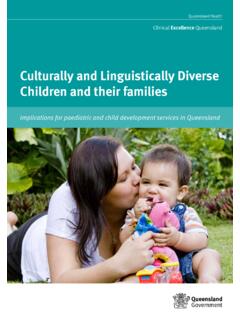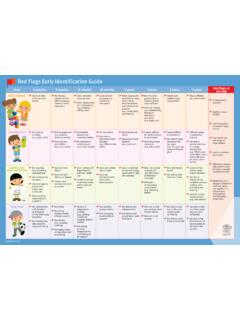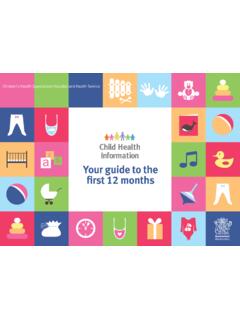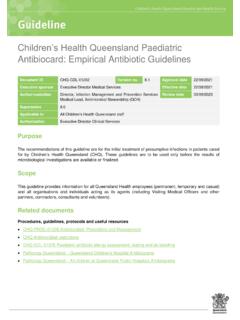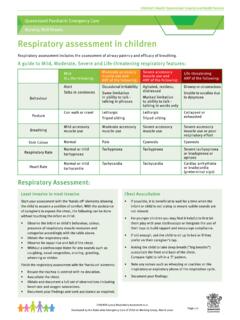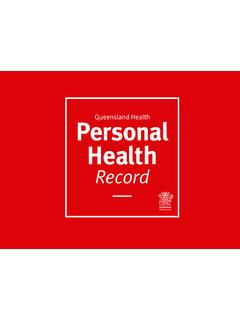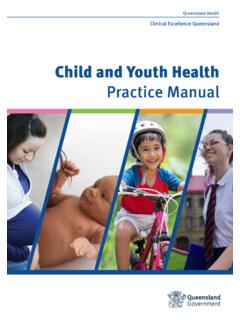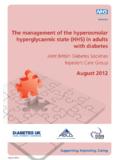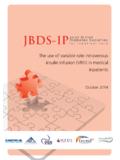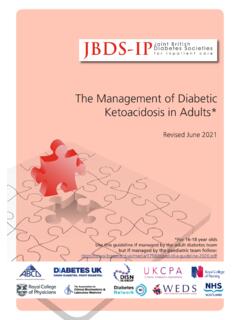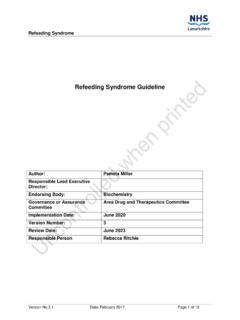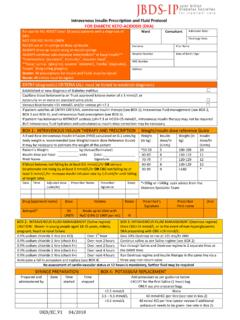Transcription of Diabetic Ketoacidosis (DKA) and Hyperosmolar ...
1 Diabetic Ketoacidosis (DKA) and Hyperosmolar hyperglycaemic State (HHS) - Emergency management in children Purpose This document provides clinical guidance for all staff involved in the care and management of a child or adolescent with Diabetic Ketoacidosis (DKA) and Hyperosmolar hyperglycaemic state (HHS) presenting to an Emergency Department (ED) in Queensland. This guideline has been developed by senior ED clinicians and Paediatricians across Queensland, with input from Endocrinology, Critical Care and Pharmacy, Queensland Children s Hospital, Brisbane. It has been endorsed for statewide use by the Queensland Emergency Care of Children Working Group in partnership with the Queensland Emergency Department Strategic Advisory Panel and the Healthcare Improvement Unit, Clinical Excellence Queensland. Key points DKA potentially fatal metabolic disorder. diagnosis requires hyperglycaemia (blood glucose level (BGL) greater than 11mmol/L), venous pH less than and/or HCO3 less than 15 mmol/L and moderate/large ketonaemia/ketonuria.
2 Cerebral oedema is a rare but serious complication requiring urgent treatment and critical care. HHS state of extreme hyperglycaemia (and hence hyperosmolality) without ketosis which is usually, but not exclusively, seen in type 2 diabetes. diagnosis requires hyperglycaemia (BGL greater than ), venous pH greater than and/or HCO3 greater than 15 mmol/L, small ketonuria, absent to mild ketonemia less than and effective serum osmolality greater than 320mOsm/kg. Management of DKA and HHS involves fluid and electrolyte replacement therapy (more aggressive in HHS). seek urgent paediatric endocrine/critical care advice (onsite or via Retrieval Services Queensland (RSQ)) for patients with severe DKA or HHS. CHQ-GDL-60016 Diabetic Ketoacidosis (DKA) and Hyperosmolar hyperglycaemic State (HHS) - Emergency management in children - 2 - Introduction Diabetes Ketoacidosis (DKA) DKA is a metabolic disorder and the leading cause of morbidity and mortality in children and adolescents with type 1 diabetes.
3 It is caused by a decrease in effective circulating insulin, insulin resistance and increased production of counter-regulatory ,2 The resulting increased hepatic and renal glucose production, and impaired peripheral glucose utilisation, causes hyperglycaemia and hyperosmolality. In addition, increased lipolysis with the overproduction of ketones leads to ketonaemia and metabolic acidosis. Hyperglycaemia and acidosis causes osmotic diuresis, dehydration and obligate loss of electrolytes. Children may present with DKA at any age, with or without a previous diagnosis of type 1 diabetes. DKA can also occur in newly diagnosed type 2 diabetes. Rarely, patients diagnosed with diabetes may have symptomatic Ketoacidosis without a raised blood glucose level. Management of an episode of DKA is not complete until an attempt has been made to identify and treat the cause. DKA without a preceding febrile illness or gastroenteritis in a patient with known diabetes is almost always the result of psychosocial problems and failure to appropriately administer insulin.
4 Cerebral oedema is a rare but devastating complication of diabetes, occurring in approximately 1% of children with DKA. It is typically described as a sudden onset of rapidly progressing neurological deterioration including altered/fluctuating level of consciousness, headache, vomiting, bradycardia, hypertension, cranial nerve palsy and abnormal posturing. Clinical cerebral oedema can occur at any time but most commonly occurs 4-12 hours after commencement of treatment. Risk factors for cerebral oedema new onset Type 1 diabetes elevated serum urea severe dehydration severe DKA (pH less than or equal to ) lower bicarbonate levels age less than five years reduced level of consciousness CHQ-GDL-60016 Diabetic Ketoacidosis (DKA) and Hyperosmolar hyperglycaemic State (HHS) - Emergency management in children - 3 - hyperglycaemic Hyperosmolar State (HHS) HHS is a state of extreme hyperglycaemia (and hence hyperosmolality) without ketosis which is usually, but not exclusively, seen in type 2 diabetes.
5 It can also occur in neonatal diabetes and in type 1 diabetes in children and adolescents with an intellectual impairment who are unable to indicate thirst. In young persons, it is much rarer than DKA, but it is rising as the incidence of type 2 diabetes increases. Polyuria and polydipsia may not be recognised and especially in hot temperatures, there can be extreme dehydration, fluid loss and electrolyte disturbance. Dehydration can be difficult to assess clinically and the hyperosmolality preserves intravascular volume initially. Initial treatment can cause movement of fluid out of the intravascular compartment and shock. More aggressive fluid replacement than in DKA is required to expand the intra and extravascular volume, restore normal renal perfusion and promote a gradual decline in corrected serum sodium concentration and osmolality. Complications of HHS venous thromboembolism associated with central venous catheters rhabdomyolysis secondary to hypophosphataemia (leading to kidney injury) malignant hyperthermia (rare) Assessment DKA Diagnosis Requires ALL of the following.
6 Hyperglycaemia (BGL greater than 11mmol/L) venous pH less than and/or HCO3 less than 15 mmol/L moderate/large ketonaemia/ketonuria DKA severity Mild Moderate Severe pH between - or HCO3 less than 15 mmol/L pH between - or HCO3 less than 10 mmol/L pH less than or HCO3 less than 5 mmol/L Ketone readings and probability of DKA Sample Method of testing Low/Small Moderate High/Large Blood Bedside meter Abott Less than mmol/L to less than mmol/L Greater than or equal to mmol/L Urine Bayer brand Keto-Diastix 0 mmol/L to less than mmol/L Greater than or equal to mmol/L Accu-chek brand Keto-Diabur-Test 5000 Negative Less than mmol/L Greater than or equal to mmol/L CHQ-GDL-60016 Diabetic Ketoacidosis (DKA) and Hyperosmolar hyperglycaemic State (HHS) - Emergency management in children - 4 - History History should include specific information on: polydipsia and polyuria (may be absent in the young child) enuresis and/or wetting accidents in a toilet trained child weight loss and/or increased appetite vomiting abdominal pain non-specific symptoms and signs of general malaise Examination Physical examination should include an assessment of: weight hydration respiration (hyperventilation is a feature of acidotic respiration) potential cerebral oedema (signs and symptoms include headache, irritability, slowing pulse, rising BP and reducing level of consciousness.)
7 Papilloedema is a late sign) potential infection including appendicitis, ileus and pancreatitis HHS Diagnosis Requires ALL of the following: hyperglycaemia (BGL greater than mmol/L) venous pH greater than and/or HCO3 greater than 15 mmol/L (lactic acid can cause a mild acidosis) small ketonuria absent to mild ketonemia less than mmol/L effective serum osmolality greater than 320 mOsm/kg Altered level of consciousness is usual but cerebral oedema is rare. Risk factors include: obesity signs of insulin resistance (acanthosis nigricans) family history of type 2 diabetes Consider sepsis in child with DKA and fever or shock (see Sepsis Guideline) CHQ-GDL-60016 Diabetic Ketoacidosis (DKA) and Hyperosmolar hyperglycaemic State (HHS) - Emergency management in children - 5 - Dehydration assessment Includes assessment of BP, pulse rate and volume, perfusion (capillary refill time, skin colour, mentation), mucous membranes and tissue turgor.
8 Volume deficit is difficult to assess accurately in DKA, particularly in the young child. ALERT Volume deficit in DKA is often overestimated which may lead to over resuscitation with IV fluids. In contrast, significant fluid deficits are present in HHS and fluid resuscitation should be aggressive. Severity of dehydration and estimation of volume deficit Mild ~ 3% Moderate ~ 5% Severe ~ 8% Life -threatening - shock Only just clinically detectable Dry mucous membranes, reduced skin turgor Dry mucous membranes, reduced skin turgor, sunken eyes, poor capillary return Severely ill with poor perfusion, thready rapid pulse (reduced BP is a very late sign) Specific considerations in DKA tachypnoea secondary to acidosis can exacerbate dryness of oral mucosa2 vasoconstriction from acidosis may contribute to the appearance of cool extremities2 catabolism due to insulin deficiency can result in weight loss Investigations Urgent baseline investigations for the management of DKA and HHS BGL (may be inaccurate via finger prick in circulatory compromise and acidosis) Finger-prick blood ketones (superior to urinary ketones)
9 Urine ketones only if blood ketones not available Urea and electrolytes (serum urea greater than mmol/L may indicate severe dehydration) Venous pH and acid-base status HbA1C (for later analysis) Additional tests required in a child with newly diagnosed diabetes include: TFT (thyroid screen) Total IgA and TTG (coeliac screen) Other investigations including FBC, urine M/C/S, CXR, CSF M/C/S, throat swab, and blood culture may be required on senior emergency/pediatric advice for a child who is hypothermic, hypotensive or has a refractory acidosis or lactic acidosis. Note that an elevated WCC is common in DKA and does not necessarily indicate sepsis. CHQ-GDL-60016 Diabetic Ketoacidosis (DKA) and Hyperosmolar hyperglycaemic State (HHS) - Emergency management in children - 6 - Management of DKA Refer to Appendix 1 for a summary of the emergency management of a child with DKA. Emergency care should always involve a rapid primary survey with evaluation of (and immediate management of concerns with) airway, breathing, circulation and disability (ABCD).
10 Aims of treatment DKA is characterised by a loss of water and electrolytes. Administration of IV fluid, prior to giving insulin results in substantial falls in blood glucose because the resultant increase in glomerular filtration rate (GFR) leads to increased urinary glucose ,4 The aims of fluid and electrolyte replacement therapy in DKA are: restoration of circulating volume replacement of sodium and water deficit over 48 hours management of the predictable fall in the serum potassium concentration after insulin therapy commences and the Ketoacidosis starts to reverse restoration of GFR with enhanced clearance of glucose and ketones from the blood administration of insulin therapy to normalise the BGL and to suppress lipolysis and ketogenesis avoidance of cerebral oedema, which may be caused by rapid fluid shifts from the extracellular fluid to the intracellular fluid compartment Management of moderate to severe DKA Refer to Appendix 2 for a summary of the ongoing management of a child with moderate to severe DKA.


